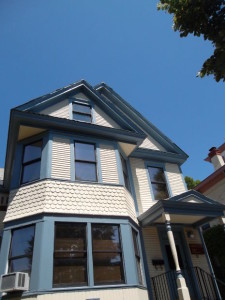A couple of years ago, the Urban Institute came out with a study, “The Housing Affordability Gap for Extremely Low Income Renters in 2013.” The takeaway conclusion: Nationwide, there were just 28 “adequate and affordable” units available for every 100 renter households with incomes at or below 30 percent of the area median.
The paper listed, among other things, populous counties with the biggest affordability gaps – that is, the counties with the fewest affordable housing units for every 100 low-income households. At the bottom was Denton, Texas, with only 8 affordable units for every 100 renters. (At the other extreme, Suffolk County in Massachusetts had the smallest affordability gap, with about 50 units for every 100 renters.
We decided to look at the affordability gap in Vermont, comparing the state’s 14 counties using statistics drawn from Vermont Housing Data. The measure isn’t quite the same as the one used by the Urban Institute, but it shows a wide ranging disparity across the state nevertheless.
| County | Pop. | Below pov. (2009-13) | Below pov./pop. | Subsidized units | Subsidized units per 100 people in poverty |
| Addison | 36,821 | 3,875 | 11% | 499 | 12.88 |
| Bennington | 37,125 | 4,900 | 13% | 808 | 16.49 |
| Caledonia | 31,227 | 4,236 | 14% | 548 | 12.94 |
| Chittenden | 156,545 | 16,672 | 11% | 4,644 | 27.86 |
| Essex | 6,306 | 995 | 16% | 77 | 7.74 |
| Franklin | 47,746 | 4,837 | 10% | 761 | 15.73 |
| Grand Isle | 6,970 | 481 | 7% | 69 | 14.35 |
| Lamoille | 24,475 | 3,021 | 12% | 358 | 11.85 |
| Orange | 28,936 | 3,701 | 13% | 399 | 10.78 |
| Orleans | 27,231 | 4,047 | 15% | 324 | 8.01 |
| Rutland | 61,642 | 7,655 | 12% | 1,341 | 17.52 |
| Washington | 59,534 | 5,439 | 9% | 1,232 | 22.65 |
| Windham | 44,513 | 5,306 | 12% | 1,231 | 23.20 |
| Windsor | 56,670 | 5,708 | 10% | 1,164 | 20.39 |
| Vermont | 625,741 | 70,873 | 11% | 13,445 | 18.97 |
Here are two key numbers to look at: The number of people below the poverty level in each county; and the number of subsidized housing units in each county per 100 impoverished people.
As you might expect, there’s not enough subsidized housing in any county to accommodate low-income people. But beyond that, it’s noteworthy that the affordability gap is biggest in the two counties with the highest poverty rates (Essex, Orleans) and smallest in the county with the lowest poverty rate. In other words, affordable housing is even scarcer in the poorest counties than in the richest.
